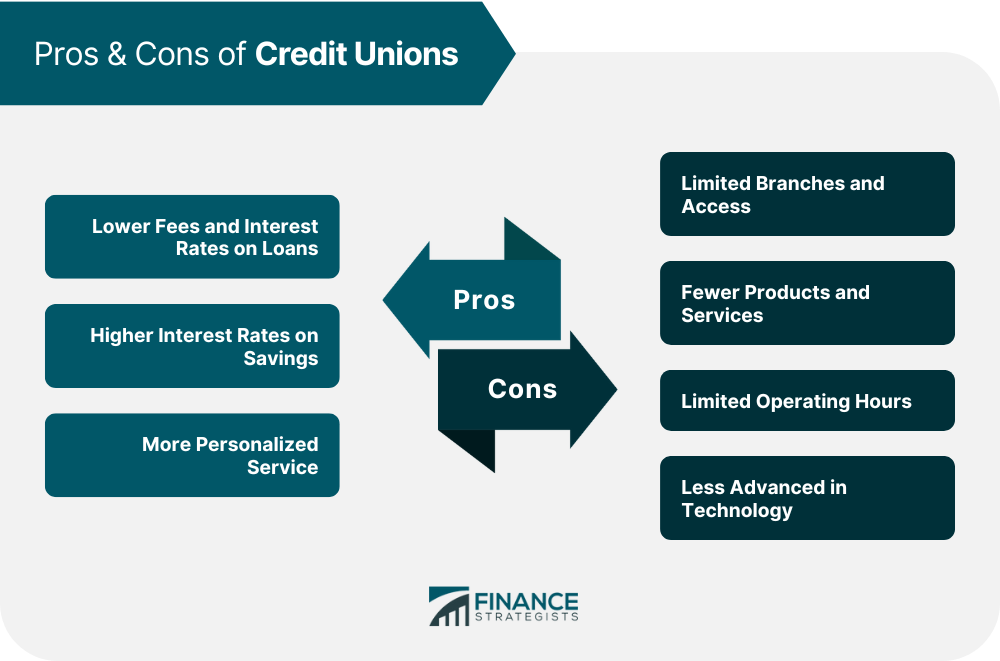Hybrid Line of Credit: Cutting-edge Financial Products from Wyoming Credit Unions
Hybrid Line of Credit: Cutting-edge Financial Products from Wyoming Credit Unions
Blog Article
The Ultimate Overview to Comprehending Lending Institution

Credit unions stand as special economic entities, rooted in concepts of shared support and member-driven procedures. Nonetheless, beyond their fundamental values, recognizing the intricate workings of credit scores unions involves a much deeper expedition. Deciphering the complexities of subscription eligibility, the development of services offered, and the distinctive benefits they bring needs a detailed exam. As we navigate with the ins and outs of lending institution, an insightful journey waits for to clarify these member-focused establishments and exactly how they differ from typical banks.
What Are Credit Unions?
Lending institution are member-owned economic institutions that provide a series of banking solutions to their participants. Unlike standard financial institutions, cooperative credit union operate as not-for-profit companies, suggesting their key focus gets on serving their members rather than taking full advantage of earnings. Members of a lending institution usually share a common bond, such as functioning for the same employer, coming from the exact same area, or becoming part of the exact same company.
One of the crucial benefits of lending institution is that they usually provide greater rate of interest on interest-bearing accounts and lower rate of interest on lendings compared to banks. Credit Union in Wyoming. This is because lending institution are structured to benefit their participants straight, enabling them to pass on their profits in the form of much better rates and less costs. Furthermore, debt unions are understood for their individualized client service, as they focus on developing relationships with their members to recognize their one-of-a-kind economic requirements and objectives
Background and Evolution of Credit History Unions
The origins of member-owned financial cooperatives, recognized today as cooperative credit union, trace back to a time when neighborhoods looked for alternatives to conventional banking organizations. The idea of lending institution come from in the 19th century in Europe, with Friedrich Wilhelm Raiffeisen frequently credited as the pioneer of the cooperative financial activity. Raiffeisen founded the very first acknowledged lending institution in Germany in the mid-1800s, stressing community support and self-help principles.
The development of credit history unions proceeded in The United States and Canada, where Alphonse Desjardins developed the very first cooperative credit union in Canada in 1900. Quickly after, in 1909, the initial united state cooperative credit union was formed in New Hampshire by a group of Franco-American immigrants. These very early lending institution run on the essential concepts of shared help, democratic control, and member possession.
Over time, cooperative credit union have actually grown in appeal worldwide as a result of their not-for-profit framework, concentrate on offering members, and offering affordable economic product or services. Today, credit score unions play a vital role in the financial industry, supplying accessible and community-oriented banking choices for organizations and people alike.
:max_bytes(150000):strip_icc()/6-benefits-of-using-a-credit-union.aspx_final-6e501699186e429ab6458d9e36ebe4a1.jpg)
Subscription and Eligibility Standards
Subscription at a lending institution is usually limited to individuals satisfying details qualification requirements based upon the organization's founding principles and governing needs. These requirements frequently include aspects such as geographical place, employment standing, subscription in specific companies, or association with specific groups. Lending institution are known for their community-oriented method, which is mirrored in their subscription needs. Hybrid Line of Credit. As an example, some lending institution may only serve individuals who work or live in a specific location, while others might be tailored to employees of a certain business or members of a particular association.
In addition, cooperative credit union are structured as not-for-profit companies, indicating that their primary objective is to serve their participants instead of generate earnings for shareholders. This emphasis on member solution commonly equates right into more personalized interest, lower charges, and affordable rate of interest on loans and cost savings accounts. By meeting the qualification criteria and ending up being a participant of a cooperative credit union, individuals can access a variety of financial product or services customized to their particular their website demands.
Services and Products Provided
Among the vital aspects that sets lending institution apart is the varied variety of financial services and items they provide to their participants. Credit rating unions commonly provide conventional financial services such as cost savings and examining accounts, lendings, and bank card. Members can additionally take advantage of investment solutions, including pension and monetary preparation assistance. Numerous lending institution use affordable rate of interest on interest-bearing accounts and fundings, along with lower fees compared to traditional banks.
Moreover, cooperative credit union frequently provide hassle-free online and mobile banking options for members to conveniently handle their finances. They might provide rewards such as common branching, allowing participants to access their accounts at various other credit unions throughout the country. Some lending institution additionally offer insurance policy products like life, home, and auto insurance coverage to help members shield their assets and liked ones.

Benefits of Banking With Credit Rating Unions
When taking into consideration monetary establishments, checking out the benefits of banking with lending institution exposes unique advantages for members seeking individualized service and affordable rates. One substantial benefit of credit unions is their emphasis on tailored client service. Unlike large financial institutions, debt unions are member-owned and focus on structure strong relationships with their participants. This indicates that additional resources cooperative credit union personnel often have a much deeper understanding of their participants' financial needs and can supply tailored services to assist them attain their goals. Additionally, lending institution are known for providing competitive passion prices on finances and financial savings accounts. Because they are not-for-profit organizations, lending institution can often provide lower lending rates, higher cost savings prices, and reduced costs contrasted to typical financial institutions. This can lead to considerable cost savings for participants with time. On the whole, financial with a cooperative credit union can offer a more personalized, cost-efficient, and member-centric economic experience.
Conclusion
Finally, credit report unions stand apart as member-owned economic organizations that focus on serving their participants over making best use of profits. With beginnings going back to 19th century Europe, cooperative credit union adhere to principles of common help and member possession. They provide a variety useful content of economic product and services, including conventional financial solutions, financial investment options, and competitive rates of interest. Membership eligibility requirements specify and mirror a community-oriented approach, offering individualized client service and a member-centric economic experience.
Credit unions are member-owned financial establishments that offer a range of banking solutions to their participants. The idea of debt unions stem in the 19th century in Europe, with Friedrich Wilhelm Raiffeisen usually credited as the leader of the cooperative banking activity.The development of credit score unions continued in North America, where Alphonse Desjardins established the initial credit score union in Canada in 1900. Credit score unions normally offer traditional financial services such as savings and inspecting accounts, fundings, and credit report cards.When considering economic organizations, discovering the advantages of financial with credit score unions exposes distinct advantages for members looking for customized solution and competitive rates.
Report this page